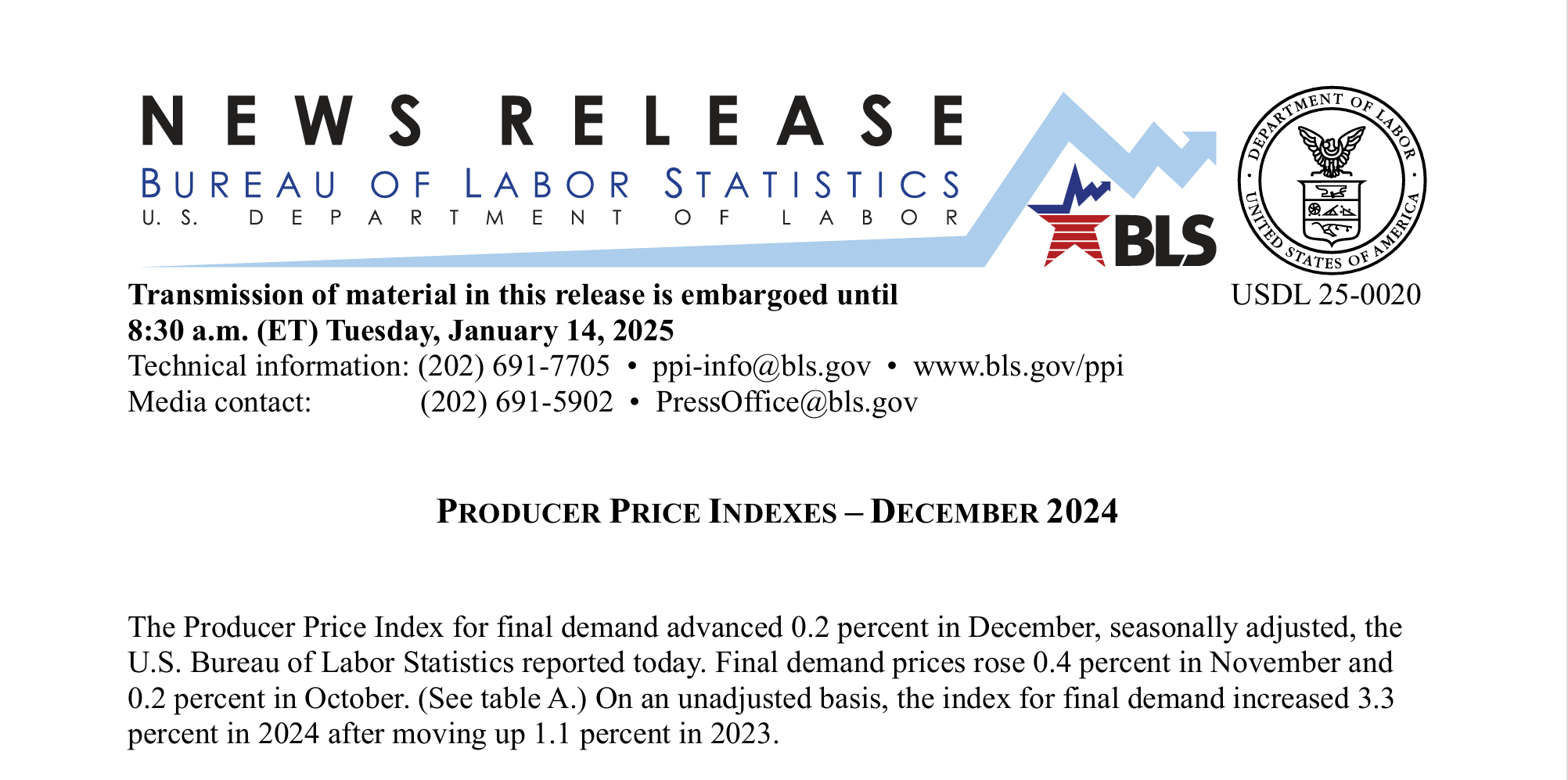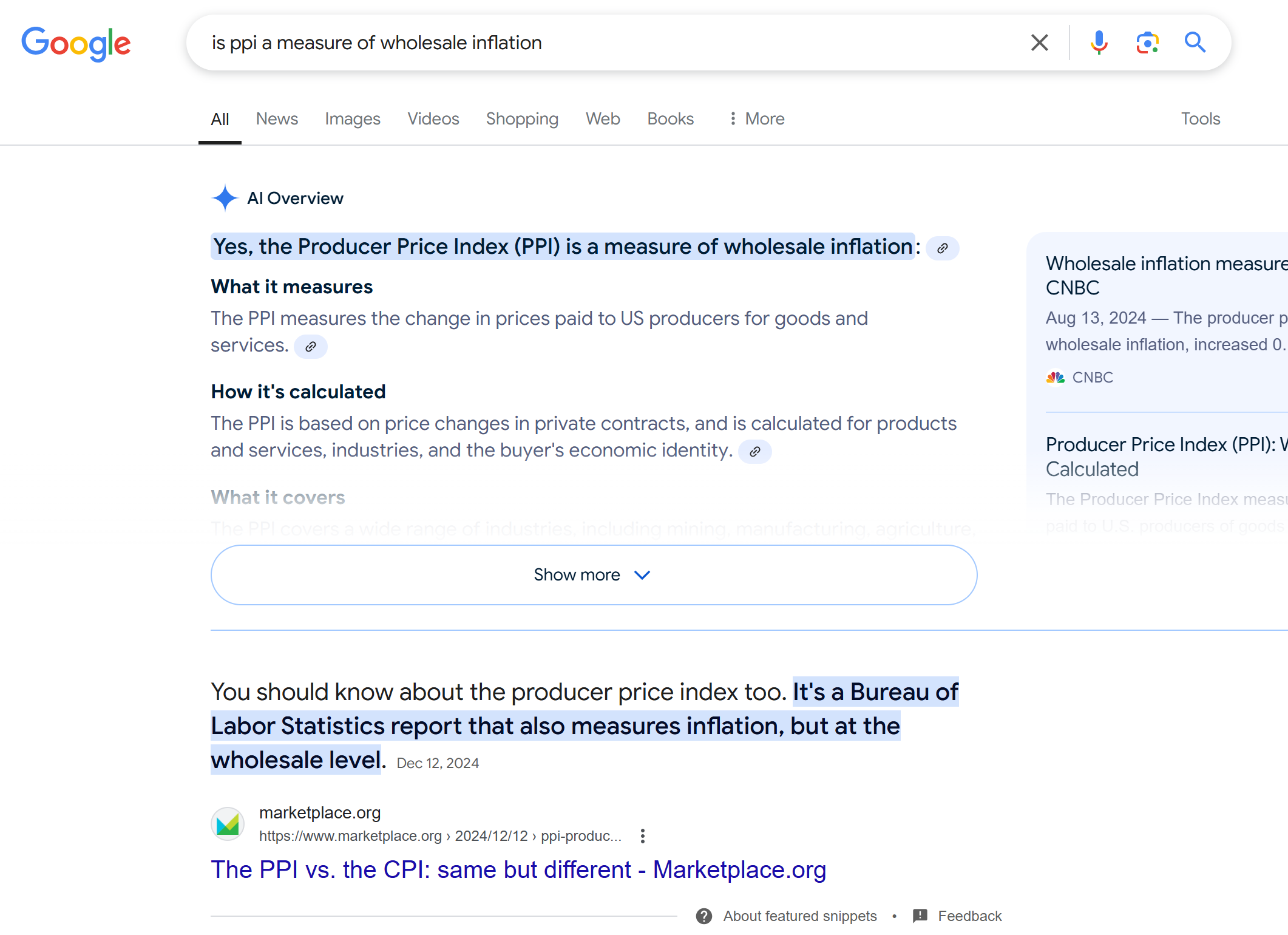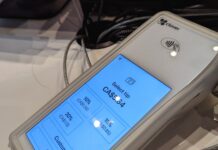Headline Producer Price Index (PPI) rose 3.3% in December last year, lower than market expectation of 3.5%, the Bureau of Labor Statistics said on Tuesday.
PPI, as an inflation indicator, usually receives less fanfare compared to its closely related cousins, CPI and PCE (Personal Consumption Expenditure) Price index, as it is almost never a primary concern for central bankers.
A standard perception of PPI is that it is a measure of “wholesale inflation”. Afterall, that is what US news outlets usually tell us; for example:
- A recent explainer published on US media Marketplace stated that PPI is “a Bureau of Labor Statistics report that also measures inflation, but at the wholesale level.”
- Investopedia, a popular online encyclopedia, called PPI “a measure of inflation at the wholesale level”.
- Even Google’s AI-assisted search result also assures us that PPI is an indicator of wholesale inflation.
This interpretation of PPI is, nonetheless, not at all correct. In a response to EconReporter, the statistics agency’s economist Nachelle Jackson told us that US PPI indexes “do not only reflect ‘wholesale inflation’”.
PPI measures what its name suggested: the change in prices that producers receive.
Headline PPI is actually called PPI for Final Demand and it “measures the change in prices producers receive for the sale of products sold for personal consumption, private capital investment, government purchases, and exports,” said the BLS economist.
PPI include prices for personal consumption
It may surprise some that the so-called “wholesale” inflation indicator includes prices for personal consumption in its calculation. So, is there an overlap with CPI or PCE price index?
The difference between PPI and CPI is that the former observes price from the producers’ angle. For example, the prices end users pay usually include shipment and delivery costs[1] as well as sales tax, hence, these additional costs are included in CPI; on the other hand, as these expenses are not part of what the producers receive, they are excluded from PPI.
This also makes the ways of collecting price data different between PPI and CPI. The price collected for a product in the CPI is the out-of-pocket expenditure paid by a consumer for the product, which can be collected directly from the point of purchase. PPIs, on the other hand, are constructed through a survey of business that provide price data on a voluntary and confidential basis. These are considered proprietary pricing information, so the BLS always treated them as confidential and not releasable them to the public.
Not only about prices paid by wholesalers
PPI doesn’t only count the prices received when selling to wholesaler. Take the price of chicken egg, which posted an extraordinary rise of 54.6% in November, for example.
The chicken egg price index measures the average change in prices received by domestic producers when selling the eggs for the intended uses (which is, again, personal consumption, private capital investment, government purchases and exports) and they will still be included in PPI even the egg “may be [first] sold to middlemen, such as wholesalers and/or retailers, before reaching the ultimate end user,” the BLS economist explained.
In general, PPI does measure margins wholesaler earns in their trade; though, the entire wholesale trade sector accounts for less than 8 percent of total PPI coverage.
Another part of PPI — Intermediate Demand
The current US PPI system, which is called the Final Demand – Intermediate Demand classification system, comprise another major component — PPI for Intermediate Demand (ID).
PPI-ID measures the change in prices producer receive for the sale of products (processed goods, unprocessed goods, and services) sold by businesses to other businesses. This index series focuses on the prices for product and services that are procured by another producer as production input.
As this index provide information about the prices of production inputs, some believe that PPI-ID may be able to predict consumer price inflation to a certain extent.
In a 2022 Economic Brief for Richmond Fed, the regional Fed’s researchers John O’Trakoun and David Ramachandran observed that “the level of PPI for intermediate demand (Stage 4) appeared to move reasonably closely with the level of the PCE price index prior to the pandemic,” and they conjectured that “gaps that open up between the two may tend to close over time.”
Why we still call it ‘wholesale inflation’?
The mostly likely reason is that the predecessor of current PPI system was actually called Wholesale Price Index (WPI). The index was renamed in 1978 “to better reflect the prices being collected were from the perspective of the producer, rather than the wholesale.”
The BLS has recently attempted to correct people’s misconception. In June 2024, the agency published a article called “Debunking 8 common misconceptions about the Producer Price Index” and included a section called “Misconception: The PPI measures only wholesale prices” to explain some of the aforementioned concepts.
Still, more than 40 years later, media and analysts still stuck using the index’s old name and refused to move on.
Notes
[1] If the producer is transporting the goods sold, the transportation cost will be captured in the product price reported to the PPI; only when goods are delivered using the services of a third-party transportation company, shipping costs are excluded from the price of the good. See more detailed explanation in the “Misconception: PPIs exclude transportation costs” section here.
A Cantonese version of this article can be found here.












